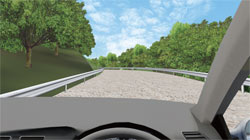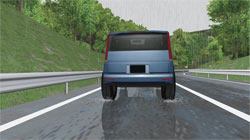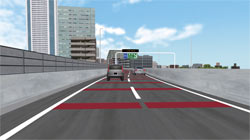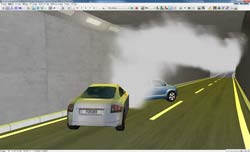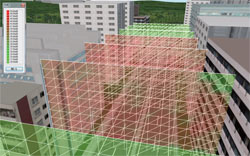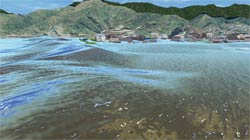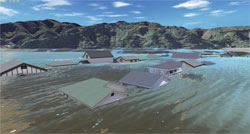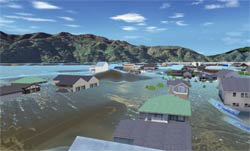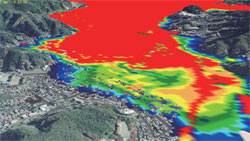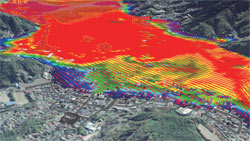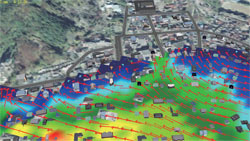This is a data created with the purpose of visualizing a large scale city environment and a high quality city, in which data that covers an extensive area with the city of Kyoto as its center and the data covering the vicinity of Shibuya station are arranged into one with an emphasis on "Digital City".
Crowd movement in 3D
We constructed a network of pedestrian's walking routes (pathways) in 3D space and developed crowd movement function that allows many characters to walk on their pathways. Several pedestrians can be arranged at once, and pedestrians can now determine their own routes to walk on and can avoid bumping against each other. The result of this development is that the visual reality is improved as well as the time required for arranging multiple numbers of pedestrians (crowd) is greatly reduced.
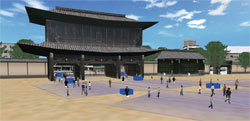 |
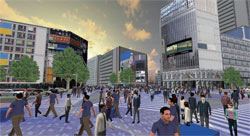 |
Shibuya scramble crossing |
Display of point crowd data
You can import the information collected inside millions of point crowd data measured on-site with 3D laser scanner (highly accurate GPS movement measurement device) to UC-win/Road to confirm the result of visualization from arbitrary direction and to conduct 3D modeling based on the imported point cloud data.
 |
